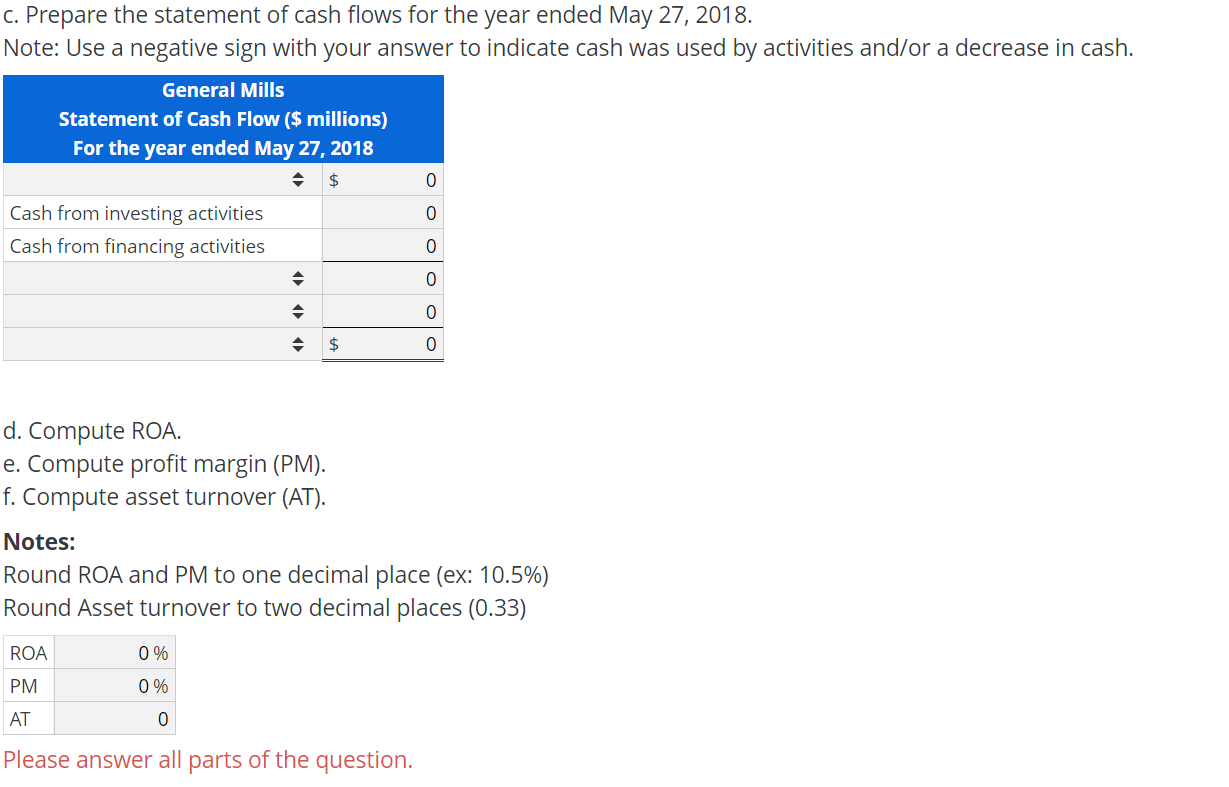Statement of Cash Flows for Not-for-Profit Entities

Similarly, lease liabilities for finance leases are required to be presented separately from lease liabilities from operating leases and from other liabilities. In addition, ROU assets are presented as noncurrent in the lessee’s balance sheet, consistent with how other amortizing assets such as PP&E are presented. However, the related lease liabilities are subject to current and long-term presentation requirements in a classified balance sheet, consistent with the way other financial liabilities are presented. Noncash investing and financing activities that are unique to not-for-profit entities include contributions of (1) property and equipment, (2) beneficial interest in trusts and (3) marketable securities. Just like all other noncash investing and financing activities, these activities, unless nearly immediate converted to cash, are not reported as operating, investing or financing activities, and instead, are reported in a separate disclosure either on the face of the statement of cash flows or in the notes to the financial statements. Although the majority of the disclosures required by ASC 842 only affect an entity’s annual financial statements, the new standard requires that lessors provide a table disclosing lease income for each interim and annual reporting period[3].
Hello and welcome to Viewpoint
The entities falling under the Smith & Howard brand are independently owned and are not liable for the services provided by any other entity providing services under the Smith & Howard brand. Our use of the terms “our firm” and “we” and “us” and terms of similar import, denote the alternative practice structure conducted by Smith & Howard PC and Smith & Howard Advisory LLC. Both options A and C are cash activities that would be reflected on a company’s cash flow statement.
Appendix A – Disclosure Example – LESSEE
- In making this determination, Lessors should assess whether the payments are more akin to lease payments or interest.
- We believe that presentation as either lease income or interest income may be appropriate, depending on the nature of the lease.
- As of December 31, 20×9 and 20×8, the weighted-average remaining lease term for all operating leases is 3.4 years and 3.5 years, respectively, while the weighted-average remaining lease term for all finance leases is 4.9 years and 5.6 years, respectively.
- A company does not generate any cash inflows or cash outflows from non-cash investing and financing activities.
Understanding the correct way to report these transactions on the statement of cash flows can help ensure your organization’s financial position is depicted accurately. As of December 31, 20×9 and 20×8, the weighted-average remaining lease term for all operating leases is 3.4 years and 3.5 years, respectively, while the weighted-average remaining lease term for all finance leases is 4.9 years and 5.6 years, respectively. Upon opening a new retail location, we typically installs brand-specific leasehold improvements with a useful life of eight years. Generally, we do not consider any additional renewal periods to be reasonably certain of being exercised, as comparable locations could generally be identified within the same trade areas for comparable lease rates.
Disclosure Objective
Income arising from leases should be presented separately in the income statement or in the footnotes. If presented in the footnotes, a lessor must also disclose which line items include lease income. Revenue and cost of goods sold related to profit or loss on leases recognized at the commencement date should be presented on a gross basis if the lessor uses leases as an alternative means of realizing value from goods that it would otherwise sell. If the lessor uses leasing as a means of providing finance, profit or loss should be presented on a net basis (i.e., as a single line item). During deliberations for the standard, many users indicated that the existing disclosure requirements did not provide sufficient information to understand an entity’s leasing activities. As a result, the new standard also introduces an overall disclosure objective together with significantly enhanced presentation and disclosure requirements for leases.
Financial Accounting
Entities are also required to provide an explanation to users of financial statements about which practical expedients were used in transition. If a seller-lessee enters into a sale and leaseback transaction, it must provide the disclosures required for lessees. Additionally, a seller-lessee must disclose the main terms and conditions of the sale and leaseback transaction and must disclose any gains or losses arising from the transaction separately from gains or losses on disposal of other assets. For finance leases, a lessee should present the interest expense on the lease liability and amortization of the ROU asset in a manner consistent with how the lessee reports other interest expense and depreciation or amortization expense in the income statement.

When the funds are transferred to the third party, the payment is recorded as a reduction in the liability account. The receipt and disbursement of agency transactions are reported as an operating activity on the statement of cash flows and can be reported either at net or gross when using the indirect method of reporting cash flows. Some SEC registrants have questioned whether they must recast all periods reflected in the 5 year Summary of Selected Financial Data in accordance with the new leasing standard? Registrants are only required to adjust the periods in the financial data table that correspond to the periods adjusted in the registrant’s financial statements.
Specifically, of our 250 retail locations, 240 are subject to operating leases and 5 are subject to finance leases. In addition, we lease our corporate headquarters facility, as well as various warehouses and regional offices. We are also a party to an additional 12 leases in which we previously operated a retail location, but which are now subleased to third parties. In addition, we have elected the short-term lease practical expedient related to leases of various equipment used in our retail locations. Lessors must classify all cash receipts from leases as operating activities in the statement of cash flows.
For operating leases, the lessee must present both components together as lease expense within income from continuing operations, consistent with the presentation of other operating expenses. Lease expense should be classified within cost of sales; selling, general, and administrative expense; or another expense line item depending on the nature of the lease. In addition to activities that generate cash flows (operating, investing, and financing), companies also engage in investing and financing activities that do not generate any cash flows. Normally, the sale of marketable securities is treated as an investing activity. If however, donated marketable securities are not converted nearly immediately to cash, then the sale of these securities would be reported as an investing activity, whether or not the donation was received with donor-imposed long-term purpose restrictions. Note X. LeasesSusie’s has historically entered into a number of lease arrangements under which we are the lessee.
These materials were downloaded from PwC’s Viewpoint (viewpoint.pwc.com) under license. Issuance of common stock in relation to the conversion of preferred stock is an example of a non-cash activity. Once you have viewed this piece of content, to ensure you can access the content most relevant to you, please confirm your territory. You can set the default content filter to expand search across territories.
The new standard does not provide specific guidance on the presentation of variable lease payments received for direct financing or sales type leases. We believe that presentation as either lease income or interest income may be appropriate, depending on the nature of the lease. In making this determination, Lessors should assess whether the payments are more akin to lease payments or interest.
Smith & Howard PC and Smith & Howard Advisory LLC, practice as an alternative practice structure in accordance with the AICPA Code of Professional Conduct and applicable law, regulations and professional standards. Smith & Howard PC is a licensed independent CPA solved menlo company distributes a single product. the company’s firm that provides attest services to its clients, and Smith & Howard Advisory LLC and its subsidiary entities provide tax and business consulting services to their clients. Smith & Howard Advisory, LLC and its subsidiary entities are not licensed CPA firms.




Leave a Reply